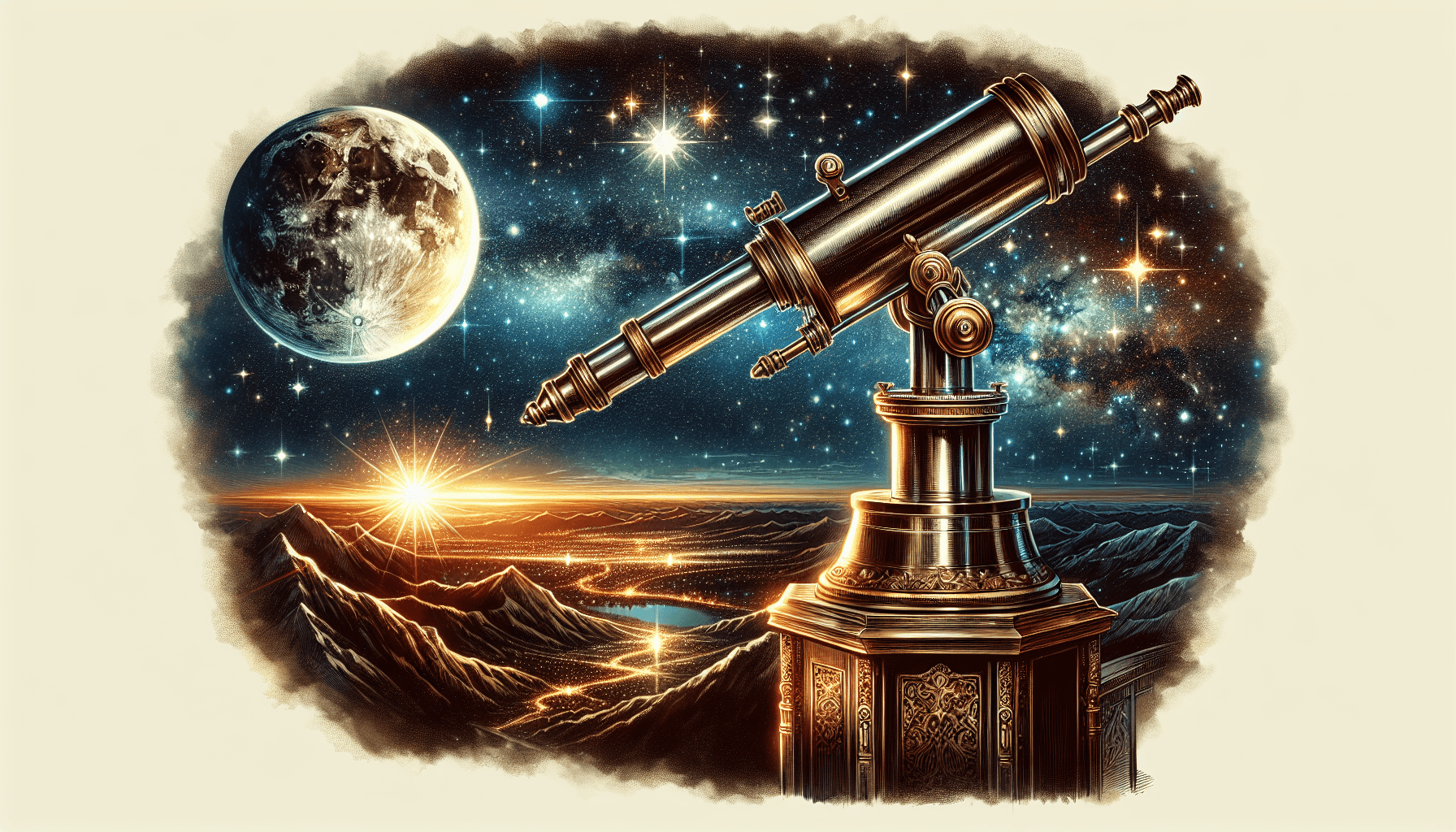What Choosing the Ideal Magnification for Astronomy? The answer may not be as straightforward as one might believe. As she gazes up at the brilliance of celestial bodies, every astronomy enthusiast—amateur or seasoned—contends with the dilemma of magnification. Selecting the appropriate magnification is essential for an enriching astronomical experience, ultimately dictating clarity, detail, and depth in one’s observations.
Table of Contents
Overview of Choosing Magnification
Magnification constitutes a critical element in the art of astronomy. It significantly influences how participants interpret the cosmic canvas above them. Given the diverse array of telescopes available, individuals should consider several factors prior to making an educated choice.
Understanding magnification is paramount. Magnification measures how many times an object appears closer to the observer than when viewed with the naked eye. For instance, a 25x magnification makes a distant object appear 25 times closer. While higher numbers may seem appealing, excessive magnification can lead to diminishing returns in clarity and detail.
Thesis Statement
This article aims to elucidate the complexities associated with choosing the ideal magnification for astronomy. Understanding these nuances is crucial in ensuring that observers maximize their engagement with the cosmos.

This image is property of pixabay.com.
Rationale
Historical Context
The history of astronomy is steeped in innovation, beginning with Galileo Galilei’s use of a simple refractor telescope in the early 1600s. This groundbreaking apparatus magnified celestial objects and initiated an era of discovery. The subsequent centuries saw the development of various types of telescopes, each boasting unique magnification capabilities. From Newtonian reflectors to modern-day computer-guided systems, advancements in technology continue to shape how enthusiasts engage with the night sky.
Current Trends
Today, trends in telescopic technology reflect the public’s enduring interest in astronomy. Recent innovations include smartphone-compatible telescopes and digital applications that guide users in navigating the night sky. These advancements have made stargazing more accessible, fostering the formation of new communities of enthusiasts. Furthermore, with the rise of citizen science, individuals can now contribute to real-time astrophysical research while enjoying the thrill of observing distant galaxies.
Key Concepts and Definitions
Understanding key terminology is essential for grasping the implications of magnification.
- Aperture: The diameter of the telescope’s primary lens or mirror. A larger aperture allows for more light, resulting in clearer images.
- Focal Length: The distance from the optical center of the lens or mirror to the point where light converges. The focal length, in tandem with the eyepiece, determines the magnification and field of view.
- Field of View: This refers to the observable area within the eyepiece. Higher magnifications typically offer a narrower field of view.
Each of these components influences the overall performance of a telescope, affecting the viewer’s experience.

This image is property of pixabay.com.
Breaking Down the Topic
The selection of magnification involves several subtopics worth analyzing to provide a comprehensive understanding:
1. Importance of Optics
Magnification results from a combination of the telescope’s optics. Focal length and aperture size work in tandem to create viable observations. For instance, a telescope with a longer focal length will generally yield higher magnification, while the aperture size ensures image clarity.
2. Practical Considerations
Observers must also weigh practical factors when selecting magnification. The degree of atmospheric disturbance—commonly known as “seeing”—can substantially affect observations. During nights of poor seeing, using high magnification may result in blurry images, as atmospheric turbulence disrupts light paths.
3. Eyepiece Selection
Choosing an appropriate eyepiece can transform the entire viewing experience. Each eyepiece comes with its own focal length, which influences the achieved magnification. Entering the realm of eyepieces, it becomes evident that preferences vary largely from individual to individual.
Example 1: Saturn’s Rings
A fascinating case study involves observing Saturn and its stunning rings. When using a telescope with a 4-inch aperture and a 10mm eyepiece (yielding a 120x magnification), observers can witness Saturn’s rings in remarkable detail. Image clarity at this magnification encourages enthusiasts to gather around and share their previous experiences. Increasing magnification to 200x often muddles the image, especially on nights with subpar conditions.
Example 2: Reflector vs. Refractor Telescopes
Examining the performance differences between reflector and refractor telescopes illustrates the uniqueness of each design. Reflector telescopes, using mirrors, can achieve larger apertures without excessive weight. In contrast, refractor telescopes use lenses, with a more limited aperture size, thus leading to higher costs. For example, a 6-inch reflector telescope can deliver stunning observations at 100x magnification, while a similarly priced refractor might falter at higher magnifications.
Compare Different Points of View
Diverse approaches to magnification yield varied opinions within the astronomy community. The following table outlines several perspectives:
| Approach | Pros | Cons | Example Telescope |
|---|---|---|---|
| High Magnification | Delivers detailed views of planetary features. | Limited field of view; sensitive to atmospheric conditions. | Celestron C8 |
| Medium Magnification | Balances detail and field of view. | May not capture very faint objects. | Meade LX90 |
| Low Magnification | Wider field of view; ideal for deep-sky objects. | Less detail in planetary observations. | Sky-Watcher Heritage 100P |
| Refractor Telescopes | Offers crisp and clear images; less maintenance. | Higher cost for larger apertures. | Tele Vue 102 |
| Reflector Telescopes | Larger apertures for deep sky views. | Requires regular maintenance to keep mirrors clean. | Orion XT8 |
These varying perspectives illustrate that the choice of magnification heavily depends on what the observer aims to achieve. Each type presents its advantages and drawbacks, culminating in unique user experiences.
Impact Assessment
From the juxtaposition of high versus low magnifications, one can assess the implications of choosing one over the other. Higher magnifications may reveal fine detail in lunar craters or Jupiter’s Great Red Spot. However, they demand stable atmospheric conditions and yield a tightly-framed view, leaving many other celestial bodies out of reach. Lower magnifications, conversely, permit the inclusion of vast segments of sky, ideal for breathtaking views of star clusters and nebulae.
Analyzing the impact of these choices underscores the importance of understanding individual preferences in relation to observing goals.
Future Directions and Implications
Predictions
As technology advances, magnification choices will likely evolve. Innovations in adaptive optics, which correct for atmospheric disturbances, promise to enhance high-magnification observations. New user-friendly computerized telescopes aim to amalgamate these innovations, providing seamless experiences for amateurs and professionals.
Implications
The evolving landscape of astronomical observation impressions may broaden the appeal of astronomy. With greater accessibility and improved technologies, individuals from diverse backgrounds can engage with the night sky. This trend is likely to cultivate a more educated society, fostering increased interest in science and space exploration.
Ultimately, the implications of magnification extend beyond individual enjoyment. They impact the broader discourse on public engagement with scientific endeavors.

This image is property of pixabay.com.
Conclusion
In summary, selecting the ideal magnification for astronomy is a nuanced process that requires careful consideration of optics, atmospheric conditions, and personal preferences. High magnification excels in providing intricate views, while lower magnification offers stunning perspectives of expansive night sky areas.
Deciding on the right magnification is not simply about numbers; it encompasses the observer’s intent and learning objectives. To conclude, exploring the cosmos can be a deeply personal journey defined by the choices one makes along the way.
What will your telescope reveal in the vastness of space? Will it be the rings of Saturn, a trailing comet, or perhaps one of the intricacies of our own galaxy?
More Engagement
Readers are encouraged to further investigate the intricacies of magnification and its relationship with telescope specifications, atmospheric conditions, and individual observer preferences. Each discovery enhances the journey through the stars.
Credible Sources
- “The Universe in a Nutshell” by Stephen Hawking.
- “Astronomy: Principles and Practice” by D.T. Wickramasinghe.
- Cloudy Nights Forum (cloudynights.com) – A community for amateur astronomers.
- The Astronomical Journal – A peer-reviewed scientific journal.
- NASA Official Website (nasa.gov) – Information on ongoing cosmic research.
With these resources, individuals will find further insights to enhance their astronomical pursuits and foster a lifelong passion for exploring the night sky.

What equipment do you need to see and photograph the planets
